Before I say anything, I want to prefix this post by stating that I am an Advisor to Zoho, which can be perceived as a competitor to Ulteo, the company that just announced providing OpenOffice On-Demand. That said, I often I’ve repeatedly stated my belief that we’re at a state of early expansion for Software as a Service, and for now, the more players the better. It’s not about slicing the pie yet, it’s about making sure the pie will be huge:
Summing it all up, I believe the winner of the “on-demand race” will not be Google, Zoho, or any of their competitors – the winners will be the customers who will have a lot more choice in picking the right business solutions later this year.
So I am happy to see new On-Demand offerings that work – and am royally p***ed when they don’t. I tried to use Ulteo, repeatedly. At the first attempt in the morning, I got stuck with a blank screen:
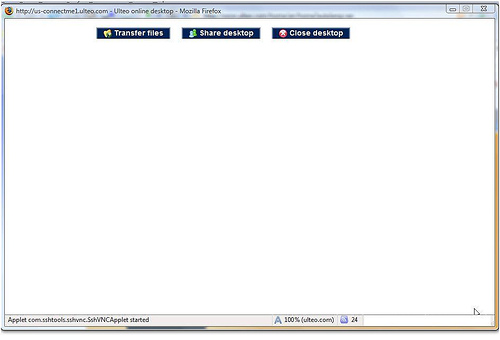
Next I tried in the evening: I spent a minute or so at the above blank screen, but finally I got some signs of life:
Oops… I don’t know of another instance, I don’t have Openoffice installed on this machine, and a Vista glitch forced me to reboot since my early morning attempt with Ulteo. And I certainly have no clue who the *** user u7670 is or how I should close Openoffice for this user on the Ulteo servers. But let’s click Yes to continue anyway:
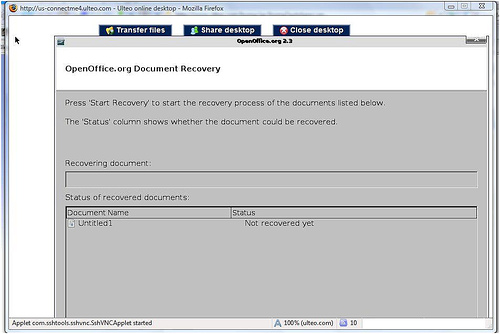
Why am I in document recovery mode and just what is it I am about to recover? Finally, I got into this somewhat broken screen:
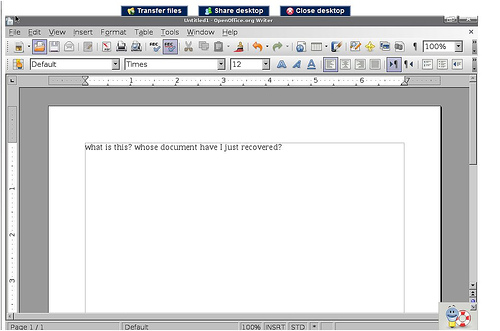
Not a very positive experience, if you ask me. On the other hand, it’s still more than the previous web-office “announcement”: Live Documents, which is still to materialize…some time next year.
Like I said, I am happy to see more On-Demand services. Those that actually exist, and perhaps even work.
Update: Jason Brooks at eWeek had similar experience.

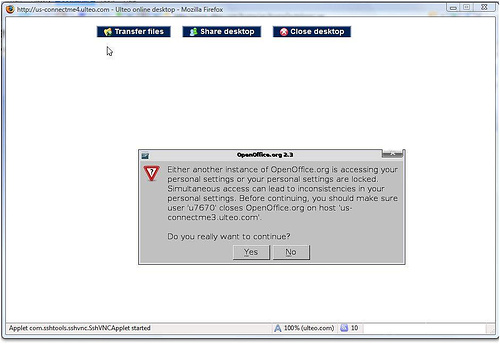
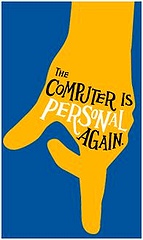 Considering how many things
Considering how many things 

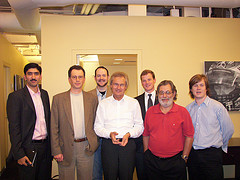
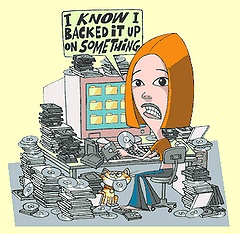 Michael Dell has warmed up
Michael Dell has warmed up 
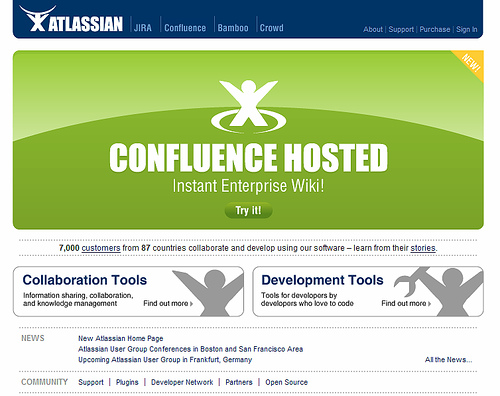
 Oh, well, if you want to find out more about Atlassian, you can attend their user
Oh, well, if you want to find out more about Atlassian, you can attend their user  For half an hour or so I felt I was back at University at Software 2007 – in Professor Hasso Plattner’s class. That’s because his keynote was a compressed version of his recent SAPPHIRE 07 speech, which in turn was an “offsite class” for his Stanford students – literally so, he flew the entire class out to Atlanta. To make his point, he used the blackboard-metaphor, with chalked handwriting (and dressed in matching black
For half an hour or so I felt I was back at University at Software 2007 – in Professor Hasso Plattner’s class. That’s because his keynote was a compressed version of his recent SAPPHIRE 07 speech, which in turn was an “offsite class” for his Stanford students – literally so, he flew the entire class out to Atlanta. To make his point, he used the blackboard-metaphor, with chalked handwriting (and dressed in matching black ).
).

 He is not a product-pusher, not a marketer: he sets direction for several years ahead.
He is not a product-pusher, not a marketer: he sets direction for several years ahead.
Recent Comments